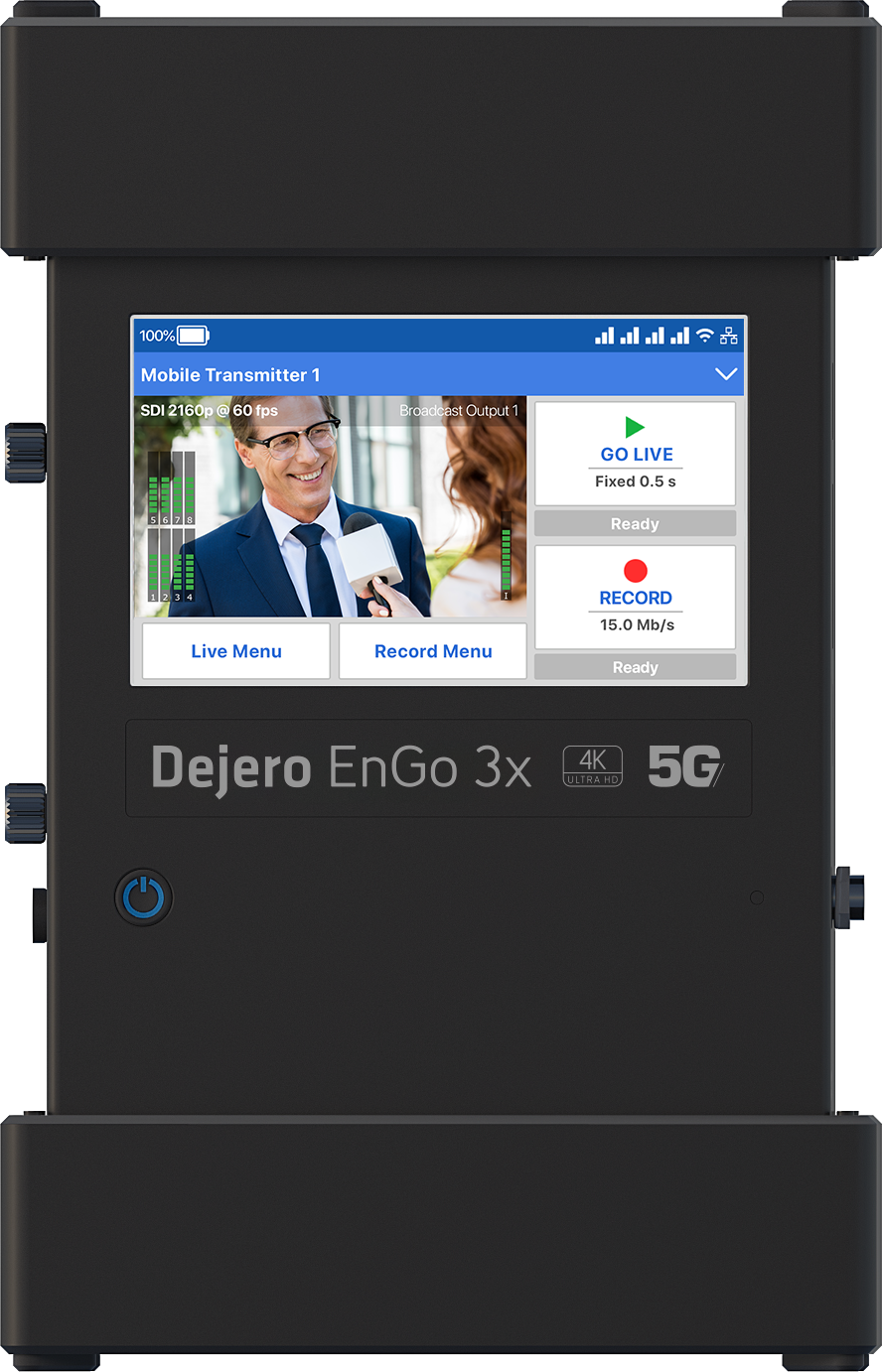
LAS VEGAS—Dejero will unveil its new EnGo 3 and EnGo 3x 5G-native mobile transmitters with integrated internet gateway at the 2022 NAB Show in Las Vegas, April 24-27. The new additions to the EnGo family combine superior 5G performance, multicamera support and 4K UHD resolution with unparalleled video quality for broadcast and media production markets, the company said.
EnGo 3 and EnGo 3x feature a completely redesigned RF and antenna architecture to unlock the full potential of 5G connections unlike other solutions in the market. “Our team worked with world-renowned RF and antenna experts to maximize cellular signal quality and performance on 5G networks,” explains Yvonne Monterroso, director of product management at Dejero.
“We’re quadrupling the number of antennas per modem and diversifying the antenna types. It’s incredibly complex to add so many antennas to a small, portable device without compromising performance and reliability, which we’ve achieved. It’s just not as simple as replacing 4G modems with 5G modems,” she added.
The new 5G EnGo transmitters feature 4x4 MIMO antennas to achieve greater reliability, lower latency and faster speeds. Dejero made modifications to the EnGo to ensure optimal antenna isolation. “We’ve seen other 5G mobile transmitters in the market using 4G antenna design principles where interference by antennas placed too close together negatively impacts reliability, especially in areas where cellular signals may be weak, or where many cellular devices are competing for network bandwidth,” continued Monterroso.
Diversity of cellular bands was another key design consideration. For EnGo 3 and EnGo 3x, Dejero selected modems that support a broad range of cellular bands to enhance 5G performance. Monterroso explains its importance for global use: “We support additional bands used by carriers in the U.S., Canada, Australia, China, Korea, and Latin America that other 5G mobile transmitters can’t connect to. It can make a huge difference for reliability.”
EnGo 3x provides multicamera support for up to four fully frame-synced HD feeds. Dejero’s new remote production transmitter can capture feeds from multiple cameras in a single unit, reducing the cost and complexity of multicamera sports and live event productions, Dejero said. The additional camera inputs can be licensed when needed.
The ability to transmit in 4Kp60 10-bit HDR with eight audio channels delivers unparalleled video quality at extremely low latencies providing viewers of sports and major live event viewers to watch in the highest definition possible. Furthermore, 4K live feeds can greatly benefit film, television and commercial productions to make it easier for distributed teams that are not located on set to monitor and detect lighting and color balance issues in real-time, allowing customers to avoid expensive reshoots, the company said. The 4K UHD feature does not require a separate license, unlike competing solutions, according to the company.
The professional video industry's #1 source for news, trends and product and tech information. Sign up below.
EnGo 3, designed for newsgathering in locations where 5G networks have been widely deployed, incorporates all of the new features of the EnGo 265, introduced in December last year. It reliably transports broadcast-quality live video from remote locations whilst also providing resilient, high-bandwidth internet access, all in one single device. With glass-to-glass latency as low as half a second over bonded cellular connections, it also delivers greater security with AES 256 encryption, a security-hardened Linux OS and a cryptoprocessor to authenticate the hardware.
The 5G networks bonded by EnGo 3 and EnGo 3x transmitters can be combined with other wireless networks including Wi-Fi and GEO/MEO/LEO satellite, and fixed line (cable/DSL/fiber) wired networks thanks to Dejero’s Smart Blending Technology, which intelligently manages the fluctuating bandwidth, packet loss, and latency differences of the individual connections in real-time, providing enhanced reliability, expanded coverage and greater bandwidth.
The new EnGo mobile transmitters also feature built-in Hybrid Encoding Technology with the latest generation of Intel processors with customized firmware. The units can adapt to real-time feedback on the complexity of the content being encoded, such as the amount of motion. It works in tandem with Smart Blending Technology to analyze the throughput capacity and latency of all the connections.
